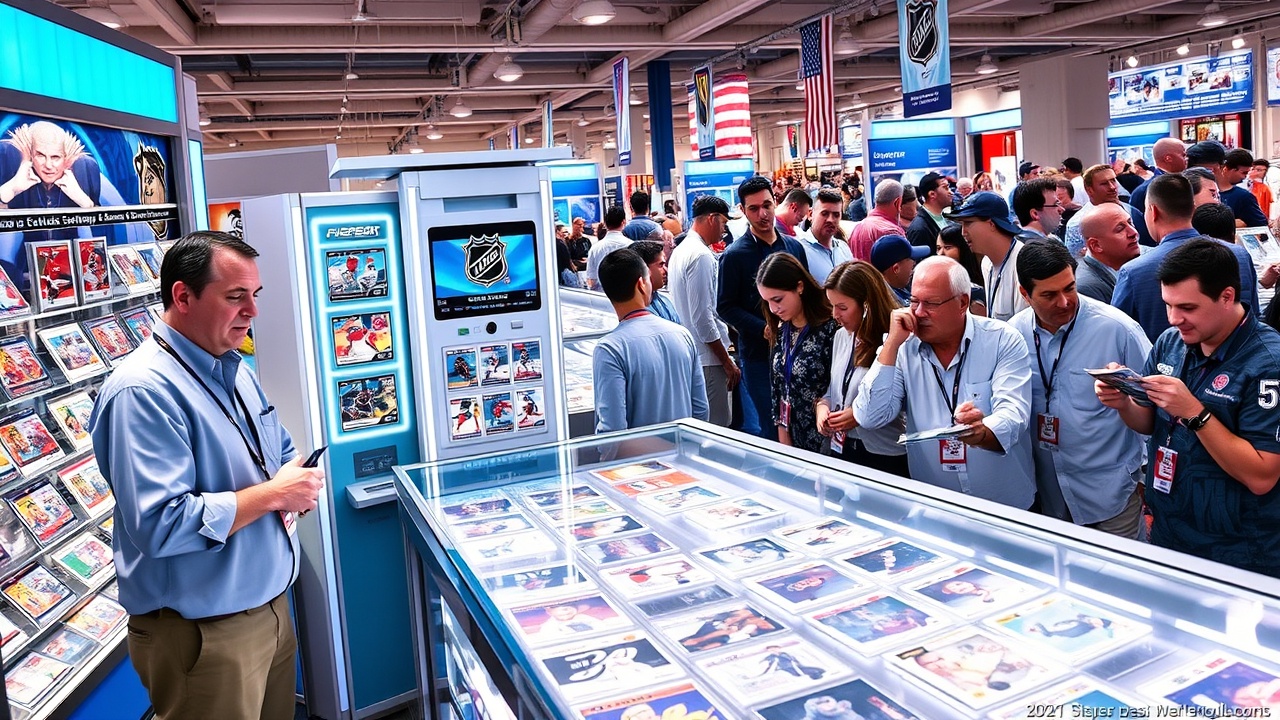Transformation in Sports Trading Cards
The world of sports trading cards has witnessed a significant transformation thanks to the incorporation of game-worn memorabilia, which has driven the value of certain cards into the millions. However, with this surge in monetary worth, the risk of fraudulent activities, particularly “patch swapping,” has escalated.
Upper Deck’s Initiatives Against Fraud
Jason Masherah, the president of Upper Deck—one of the leading trading card manufacturers—often finds himself scrutinizing the authenticity of the components of these collectible cards. This concern is especially pertinent as Upper Deck prepares to unveil their latest premier NHL product, The Cup Hockey, scheduled for release on June 4.
In an effort to counteract the fraudulent practice where counterfeiters alter desirable patches to inflate a card’s value, Upper Deck is implementing a rigorous security protocol for their rookie patch auto cards. Each card will be meticulously sealed in a durable plastic casing, accompanied by a photograph and serial number, along with a QR code that links to a gallery showcasing the card from various perspectives. This initiative aims to provide buyers with assurance regarding the card’s original condition, acting as a safeguard against any possible tampering.
Community Concerns and Industry Legacy
Masherah pointed out that the trading card community has long grappled with issues relating to patch swapping, where individuals would swap out less appealing patches for more visually striking alternatives, thus artificially enhancing a card’s market value. He emphasized the absence of a reliable system for collectors to verify whether their cards have been compromised, stating, “This rookie auto patch authentication marks the initial step in addressing this widespread dilemma within the trading card industry.”
The allure for collectors often lies in patches that feature vibrant colors or emblems from a player’s uniform, such as team logos or laundry tags, making them more desirable and consequently more susceptible to manipulation. Although tampering could potentially ruin a card’s condition, Masherah acknowledged that dishonest practices have occurred more frequently than collectors might realize, leading to a general lack of trust within the community. He expressed concern that if these fraudulent activities continue unchecked, collectors might become increasingly hesitant to engage in the secondary market for trading cards.
Upper Deck’s dedication to authenticity is not a novel concept; the company has a history dating back to their groundbreaking use of holograms to protect cards since the introduction of their 1989 baseball set, featuring the legendary Ken Griffey Jr.. This legacy continued in 1992, when they enhanced autograph verification with a comprehensive process that included recorded hologram IDs. The forthcoming rookie patch auto verification for The Cup will adopt a similar systematic approach titled “The Authority Authenticator.”
Challenges and Future Directions
However, Upper Deck is aware of the potential challenge posed by collectors who may seek to remove cards from their protective casings for independent grading purposes. Masherah mentioned ongoing talks with grading companies about the possibility of including Upper Deck’s authentication serial number in graded cases, although he admitted this presents a unique difficulty.
The protective cases for the cards will be marked with a ‘U’ to denote their uncirculated status, aiming to maintain the value for collectors. Masherah believes that this authentication strategy could revolutionize the industry, serving as a crucial measure for buyers at the point of acquisition. He stated, “Prospective buyers of an Upper Deck rookie auto patch card can now verify its unaltered status through a secure platform, eliminating the need to submit it for third-party confirmation and reducing the risk of purchasing a tampered card.”
By evaluating the success of this initiative with the current edition of The Cup, Upper Deck is considering broader applications of this authentication framework in future card sets.




